Guest Post by John Wilder
“You heard Marcellus threw Tony Rocky Horror out a four story window for giving me a foot massage? And you believe that?” – Pulp Fiction
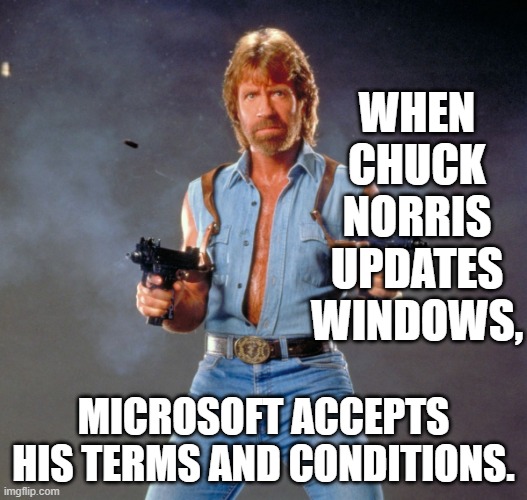
Ahh, Chuck Norris, with his hair feathered like the wings of a majestic eagle . . .
We have a built-in bias that there is a way that the world should be, rather than spending effort on understanding how the world it, and adjusting accordingly.
When something “big” happens, the default human condition is to assume that things will eventually go back to the way that they were before the event. This is normal. I recall reading in Taleb’s The Black Swan about how his relatives in Beirut kept expecting Lebanon to go back to the way it was before war broke out in the 1970s. It hasn’t.
And it won’t. And Lebanese police have it the worst: they have to investigate restaurants if they hear of a bad hummus side.
Our economy is that way. It is built, in large part, on inertia. In January 2020, a broad definition of money (the Federal Reserve® calls it M2) was $15.5 trillion dollars. Today, it stands at $22 trillion dollars. Keep in mind that this includes money just sitting in accounts, gathering dust.
The money supply has increased by at least 43%. How?

This graph is somewhat misleading – it doesn’t explain that savings accounts were added in the adjustment to make that big vertical line. The totals I have in the text above are the latest I could find at the Fed®. All I can suggest is that you find someone as interested in you as the Wilder Spokesmodel® is interested in economics.
The government printed it and then spent it. The banks lent it, since there is essentially a zero reserve requirement now. Regardless, what it means is that dollars are being printed at an ever-increasing pace. The latest spending bills just add trillions to the mix.
Through all of this, economists are pretending that 20% inflation is growth. As prices go up, the Gross Domestic Product goes up. But inflation is increasing faster. We’re in recession, but that recession is hidden by inflation. Our economy is shrinking even as printed money makes it seem larger.
Oddly, there are plenty of jobs at lower wages that are going unfilled. Why? Because with current stimulus spending and government benefits, in some cases it doesn’t make sense for people to go back to work. Work for $15 an hour, or play vidya and eat Twinkies® for $12?
Not a hard choice for many.
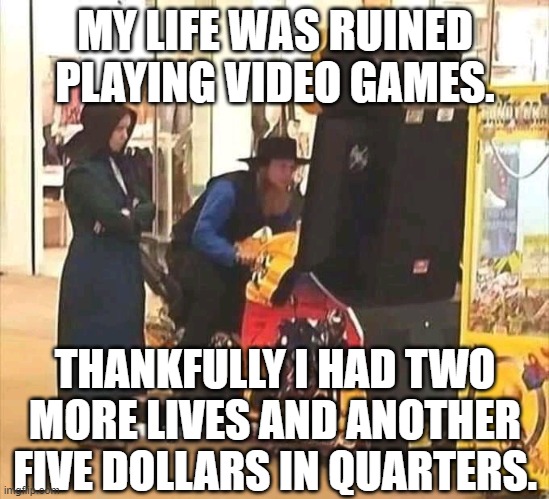
Did you hear about the Amish topless bar? Not a bonnet in sight.
What about people who want to work but don’t want to take the “jab”? Those wages are going up phenomenally as companies work to compete for a shrunken pool of labor. Think EMTs. Firefighters.
It is a weird recession – prices go up, wages are going up (but not as much as prices), labor is scarce, but the GDP is down in constant dollar terms.
Looking around the corner, this simply cannot last. I’ve written about the Red Queen before. The Red Queen said to Alice in Alice in Wonderland’s sequel, Through the Looking-Glass as Alice asks the Red Queen why they’re running and not getting anywhere:
“Now, here, you see, it takes all the running you can do, to keep in the same place. If you want to get somewhere else, you must run at least twice as fast as that!”
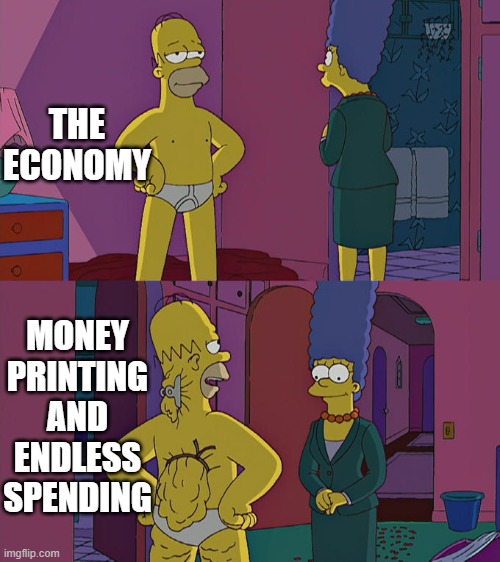
Well, it’s almost a bikini picture.
Printing dollars like we are is just keeping the economy (sort of) in the same place. It’s the monetary equivalent of using increasing amounts of crack to cure a junkie, or using electrical shocks and massive amounts of medication to keep a doddering 79-year-old Alzheimer’s patient mobile enough to give a rambling speech off of a teleprompter when wheeled out in front of a crowd. But in either case, a Biden and pudding are involved. So there’s that.
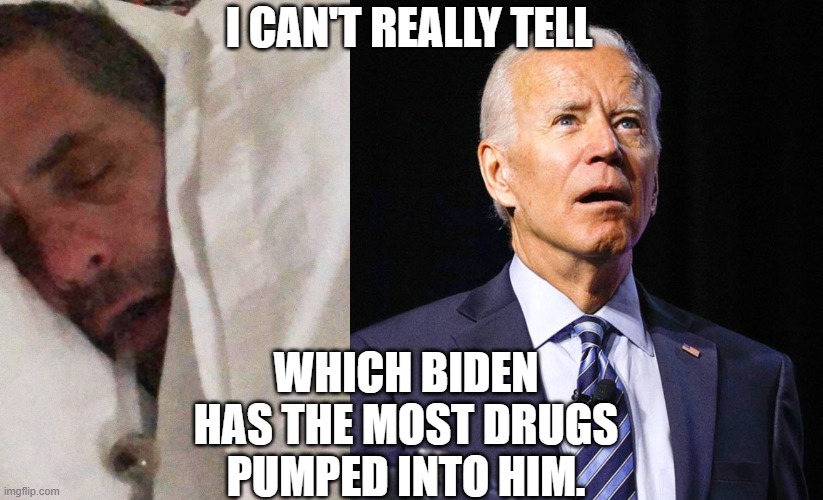
I’ve begun to wonder if Hunter might not be the best of the two for the Oval Office, at least he has goals. Prostitutes and crack cocaine are goals and there’s a chance he might not show up for work at all in a four-year span. He’s good at taking jobs and getting paid for nothing.
But this ignores a basic principle of fact. When I print a dollar, I have created nothing. To explain this, I’ll go back to the writings of dead French guy Frédéric Bastiat. Bastiat asked a simple question: what happens if someone breaks a shopkeeper’s window?
Well, he must go buy another window. If that costs 6 francs (7 and 3/16 liters) then the glassmaker has an economic gain, which he could invest in increasing the size of his glass manufacturing, or, more likely (since he is French) use it to buy cartoonishly long wands of bread, cheap cigarettes, and berets.
So everyone wins, right? The shopkeeper gets a new window, and the glassmaker gets a profit.
Well, if that were correct, then all we would have to do is enjoy the George Floyd Economic Plan®: burn down cities and everyone gets rich when we rebuild them.
Obviously, that’s nonsense, primarily because the economy is (at best) the same as it was before. At worst? Every dime spent to replace broken glass is a dime that wasn’t spent making the economy wealthier: many profits are spent to increase capacity or efficiency. Increased capacity increases the wealth that the factory can produce. Increased efficiency lowers their cost. Both of these things are (generally) good.
Breaking windows, like printing dollars, is just theft. Whereas the shopkeeper has his window destroyed, the people can have all that they worked for and saved destroyed.
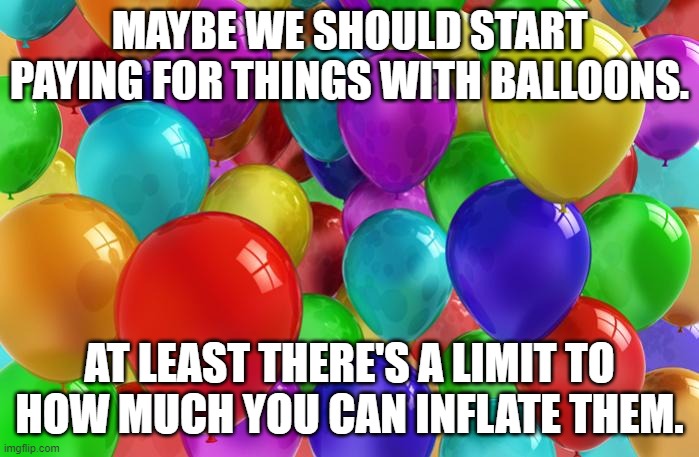
My friend patented a cold air balloon, but it never took off.
Printing cash is theft, but theft from those that have been productive to those that either leech off of the system or those that are insiders. But I repeat myself. In the bailouts following the Great Recession in 2009, billions of dollars were offloaded to Wall Street insiders for taking no-risk positions in mortgage-backed securities. If the insiders won, they won and kept the money. If the insiders lost, the U.S. Treasury (that is, us) lost.
The games have gone on too long – the economy is a lie, and politicians of both flavors are happily breaking windows to keep it going just a few more years until they get theirs.
I’ll point out that I’ve correctly predicted five of the last three recessions, so I do tend to be a bit on the pessimistic side. Regardless, I’ll maintain that all of the elements exist right now for significant and lasting decline. All of the “emergency” spending bills, the “Build Back Better” bill – all of those have one purpose – to feed the Red Queen so we can go faster and faster.
To stay in the same place.
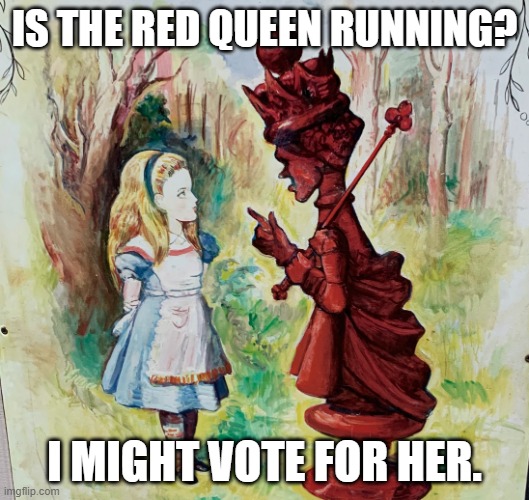
Why do I never eat before a marathon? I fast.
As much as we might like to go back to a simpler time – a rewind to the 1990s, perhaps, we cannot. Resets don’t really exist – the only actual outcome is to create a new (or the same) set of winners. We are on the verge of a strange and dangerous new future.
It starts the moment printing ceases to have any effect. That’s just around the corner.
Time to stock up. I think there might be a lot more broken windows by the time we’re done.





Here we go again, chewing on the same old shoe leather & no positive move forward. It is time to stop wearing out the shoes by marking time, don’t you think?
Soon, very soon I think, people will realize prices aren’t going to come back down. Powell just told everyone paying attention as much. All those waiting for used cars, or beef, or anything else to come down in price will buy this week instead of waiting until next week knowing it will be more expensive.
When that happens…It’s On! Welcome to the Crack Up Boom.
“The first stage of the inflationary process may last for many years. While it lasts, the prices of many goods and services are not yet adjusted to the altered money relation. There are still people in the country who have not yet become aware of the fact that they are confronted with a price revolution which will finally result in a considerable rise of all prices, although the extent of this rise will not be the same in the various commodities and services. These people still believe that prices one day will drop. Waiting for this day, they restrict their purchases and alongside increase their cash holdings. As long as such ideas are still held by public opinion, it is not yet too late for the government to abandon its inflationary policy.” Mises